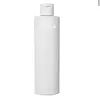What's inside
What's inside
 Key Ingredients
Key Ingredients

 Benefits
Benefits

 Concerns
Concerns

 Ingredients Side-by-side
Ingredients Side-by-side

Water
Skin ConditioningLauryl Glucoside
CleansingSodium Lauroyl Sarcosinate
CleansingCocamidopropyl Betaine
CleansingGlycerin
HumectantSodium Chloride
MaskingOleic/Linoleic/Linolenic Polyglycerides
EmollientCitric Acid
BufferingMaltodextrin
AbsorbentPanthenol
Skin ConditioningSodium Benzoate
MaskingCoco-Glucoside
CleansingHydroxypropyl Guar Hydroxypropyltrimonium Chloride
Glycol Distearate
EmollientPotassium Sorbate
PreservativeMaris Aqua
Humectant1,2-Hexanediol
Skin ConditioningCamellia Japonica Phytoplacenta Extract
AntimicrobialCaesalpinia Spinosa Fruit Pod Extract
Hydroxypropyltrimonium Hyaluronate
Laminaria Digitata Extract
Skin ProtectingHelianthus Annuus Sprout Extract
Skin ConditioningChlorella Vulgaris Extract
Skin ConditioningPortulaca Oleracea Extract
Skin ConditioningSaccharide Isomerate
HumectantLavandula Stoechas Extract
MaskingWater, Lauryl Glucoside, Sodium Lauroyl Sarcosinate, Cocamidopropyl Betaine, Glycerin, Sodium Chloride, Oleic/Linoleic/Linolenic Polyglycerides, Citric Acid, Maltodextrin, Panthenol, Sodium Benzoate, Coco-Glucoside, Hydroxypropyl Guar Hydroxypropyltrimonium Chloride, Glycol Distearate, Potassium Sorbate, Maris Aqua, 1,2-Hexanediol, Camellia Japonica Phytoplacenta Extract, Caesalpinia Spinosa Fruit Pod Extract, Hydroxypropyltrimonium Hyaluronate, Laminaria Digitata Extract, Helianthus Annuus Sprout Extract, Chlorella Vulgaris Extract, Portulaca Oleracea Extract, Saccharide Isomerate, Lavandula Stoechas Extract
Water
Skin ConditioningVitis Vinifera Seed Oil
EmollientSqualane
EmollientDicaprylyl Carbonate
EmollientButyrospermum Parkii Butter
Skin ConditioningLactobacillus
Skin ConditioningYeast Ferment Extract
Skin ConditioningCetearyl Alcohol
EmollientHydrogenated Vegetable Glycerides
EmollientPotassium Cetyl Phosphate
EmulsifyingTerminalia Catappa Leaf Extract
Skin ConditioningPropylene Glycol
HumectantLimnanthes Alba Seed Oil
Skin ConditioningOlea Europaea Fruit Oil
MaskingTocopheryl Acetate
AntioxidantPhenoxyethanol
PreservativePanthenol
Skin ConditioningHydrogenated Palm Glycerides
EmollientSambucus Nigra Flower Extract
RefreshingParfum
MaskingPvp
Emulsion StabilisingTannic Acid
AstringentCarbomer
Emulsion StabilisingAlcohol
AntimicrobialEthylhexylglycerin
Skin ConditioningXanthan Gum
EmulsifyingLeontopodium Alpinum Flower/Leaf Extract
Skin ConditioningPotassium Sorbate
PreservativeLeuconostoc/Radish Root Ferment Filtrate
AntimicrobialHydrolyzed Cicer Seed Extract
Skin ProtectingDisodium EDTA
Biosaccharide Gum-1
HumectantCaprylic/Capric Triglyceride
MaskingSodium Hydroxide
BufferingLinalool
PerfumingSodium Benzoate
MaskingLactic Acid
BufferingPantolactone
HumectantBenzyl Alcohol
PerfumingBenzyl Salicylate
PerfumingGeraniol
PerfumingAscorbyl Palmitate
AntioxidantCitric Acid
BufferingAscorbic Acid
AntioxidantWater, Vitis Vinifera Seed Oil, Squalane, Dicaprylyl Carbonate, Butyrospermum Parkii Butter, Lactobacillus, Yeast Ferment Extract, Cetearyl Alcohol, Hydrogenated Vegetable Glycerides, Potassium Cetyl Phosphate, Terminalia Catappa Leaf Extract, Propylene Glycol, Limnanthes Alba Seed Oil, Olea Europaea Fruit Oil, Tocopheryl Acetate, Phenoxyethanol, Panthenol, Hydrogenated Palm Glycerides, Sambucus Nigra Flower Extract, Parfum, Pvp, Tannic Acid, Carbomer, Alcohol, Ethylhexylglycerin, Xanthan Gum, Leontopodium Alpinum Flower/Leaf Extract, Potassium Sorbate, Leuconostoc/Radish Root Ferment Filtrate, Hydrolyzed Cicer Seed Extract, Disodium EDTA, Biosaccharide Gum-1, Caprylic/Capric Triglyceride, Sodium Hydroxide, Linalool, Sodium Benzoate, Lactic Acid, Pantolactone, Benzyl Alcohol, Benzyl Salicylate, Geraniol, Ascorbyl Palmitate, Citric Acid, Ascorbic Acid
Ingredients Explained
These ingredients are found in both products.
Ingredients higher up in an ingredient list are typically present in a larger amount.
Citric Acid is an alpha hydroxy acid (AHA) naturally found in citrus fruits like oranges, lemons, and limes.
Like other AHAs, citric acid can exfoliate skin by breaking down the bonds that hold dead skin cells together. This helps reveal smoother and brighter skin underneath.
However, this exfoliating effect only happens at high concentrations (20%) which can be hard to find in cosmetic products.
Due to this, citric acid is usually included in small amounts as a pH adjuster. This helps keep products slightly more acidic and compatible with skin's natural pH.
In skincare formulas, citric acid can:
While it can provide some skin benefits, research shows lactic acid and glycolic acid are generally more effective and less irritating exfoliants.
Most citric acid used in skincare today is made by fermenting sugars (usually from molasses). This synthetic version is identical to the natural citrus form but easier to stabilize and use in formulations.
Read more about some other popular AHA's here:
Learn more about Citric AcidPanthenol is a common ingredient that helps hydrate and soothe the skin. It is found naturally in our skin and hair.
There are two forms of panthenol: D and L.
D-panthenol is also known as dexpanthenol. Most cosmetics use dexpanthenol or a mixture of D and L-panthenol.
Panthenol is famous due to its ability to go deeper into the skin's layers. Using this ingredient has numerous pros (and no cons):
Like hyaluronic acid, panthenol is a humectant. Humectants are able to bind and hold large amounts of water to keep skin hydrated.
This ingredient works well for wound healing. It works by increasing tissue in the wound and helps close open wounds.
Once oxidized, panthenol converts to pantothenic acid. Panthothenic acid is found in all living cells.
This ingredient is also referred to as pro-vitamin B5.
Learn more about PanthenolPotassium Sorbate is a preservative used to prevent yeast and mold in products. It is commonly found in both cosmetic and food products.
This ingredient comes from potassium salt derived from sorbic acid. Sorbic acid is a natural antibiotic and effective against fungus.
Both potassium sorbate and sorbic acid can be found in baked goods, cheeses, dried meats, dried fruit, ice cream, pickles, wine, yogurt, and more.
You'll often find this ingredient used with other preservatives.
Learn more about Potassium SorbateSodium Benzoate is a preservative. It's used in both cosmetic and food products to inhibit the growth of mold and bacteria. It is typically produced synthetically.
Both the US FDA and EU Health Committee have approved the use of sodium benzoate. In the US, levels of 0.1% (of the total product) are allowed.
Sodium benzoate works as a preservative by inhibiting the growth of bacteria inside of cells. It prevents the cell from fermenting a type of sugar using an enzyme called phosphofructokinase.
It is the salt of benzoic acid. Foods containing sodium benzoate include soda, salad dressings, condiments, fruit juices, wines, and snack foods.
Studies for using ascorbic acid and sodium benzoate in cosmetics are lacking, especially in skincare routines with multiple steps.
We always recommend speaking with a professional, such as a dermatologist, if you have any concerns.
Learn more about Sodium BenzoateWater. It's the most common cosmetic ingredient of all. You'll usually see it at the top of ingredient lists, meaning that it makes up the largest part of the product.
So why is it so popular? Water most often acts as a solvent - this means that it helps dissolve other ingredients into the formulation.
You'll also recognize water as that liquid we all need to stay alive. If you see this, drink a glass of water. Stay hydrated!
Learn more about Water